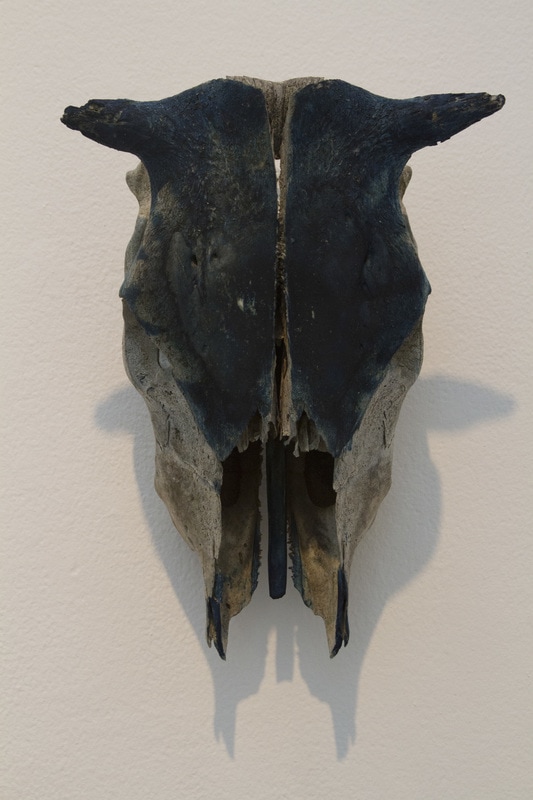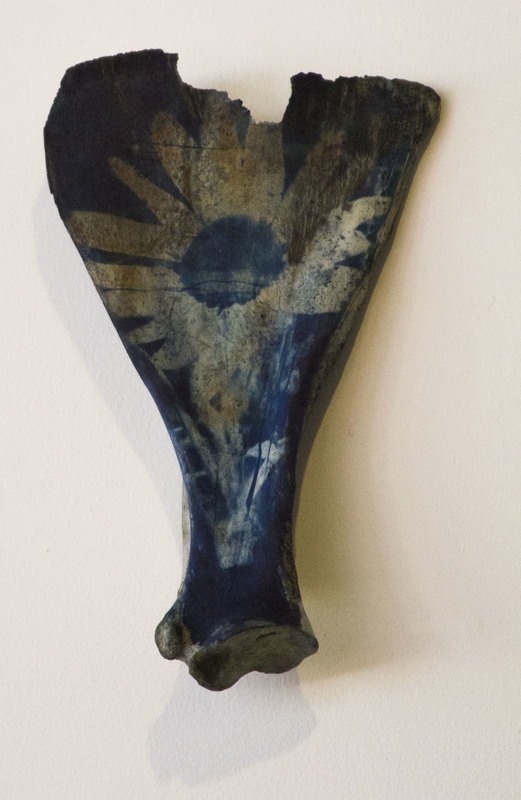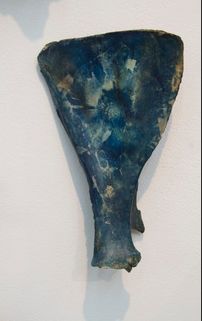|
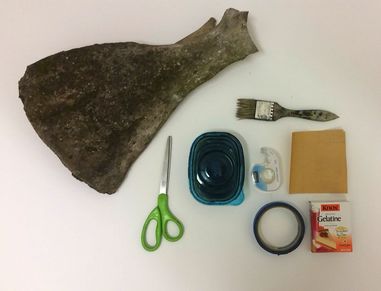 Materials Needed to Cyanotype Print on Bones: Unflavored Gelatin - Knox Brand is found in most grocery stores Bones Sandpaper Painters Tape Clear Tape Negatives or objects for a photogram UV Light Source - The sun or blacklight lamps Glass or Plastic Containers Stir Sticks Paint Brushes Standard Cyanotype Solution - Equal mixtures of Solution A and Solution B Solution A 400 ml water 100g ferric ammonium citrate, Add water until total solution is 500m Solution B 400 ml water 40g potassium ferricyanide Add water until total solution is 500ml 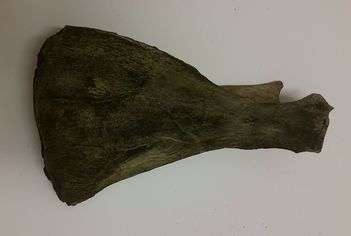 Preparation of Bones for Cyanotype Acquiring Bones The easiest way to acquire bones is by ordering off of Ebay or Etsy where you can find clean bones which can be printed on as soon as they arrive. A second method is finding hunters or farmers who have animals, and ask them where they dump their bones or sickly animals. These options are ideal because the bones you are using will be clean and dry, thus easier to print on. 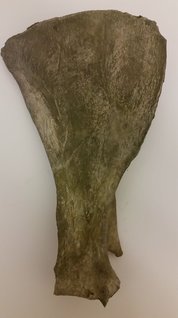 Cleaning Bones Once you have your bones, make sure they are cleaned by soaking them and gently scrubbing with a sponge in warm water. This will remove any excess grime and debris. Preparing the Surface After the bones have been washed and dried, select the section you would like to print on, tape off if necessary, then use sandpaper to remove bone flakes or growth from the area being printed. Brush or sponge off dust created during sanding. 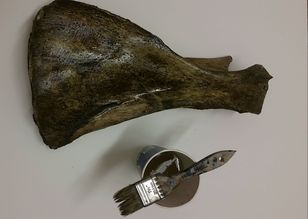 Applying Gelatin Next, you will prepare your bones with gelatin. The gelatin is essential to seal pores in the bone and provide a layer for the cyanotype fluid to sit without soaking in. Also without gelatin the images created will be less clear and unpredictable. To use the gelatin, warm up water and pour in one packet of gelatin for every cup of water used. Stir until the powder completely dissolves. Brush a thin layer of the gelatin solution onto the section you will be printing on.. Allow the first layer to dry, and then add 1-2 more layers of gelatin onto the bone; the younger a bone is, the less coats it needs. Note: If you can dip the whole bone into your gelatin you can. 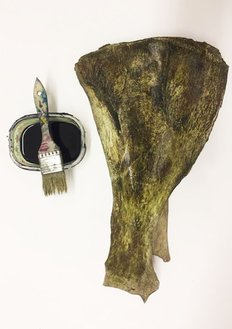 Cyanotype Printing on Bones Applying Cyanotype Once all layers of gelatin have dried, brush cyanotype fluid onto the bone making sure to completely cover the surface but not oversaturate it. Allow the bone to completely dry in a dark space, this will be around 1-2 hours. Note: Due to the porous nature of bones, you should print on them within 48 hours of coating the materials if possible. After long periods of time, image definition will decrease or be impossible. 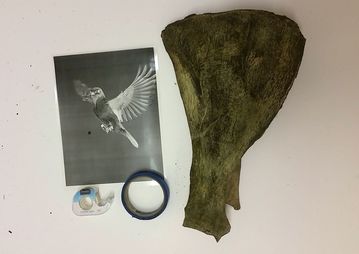 Applying a Negative To create a clear image, the negative should be touching the bone as much as possible, however, because bones are not flat like paper, it is difficult to make the negative touch all surface area. By using clear tape, one is able to cut the negative apart and reassemble it onto the bone. Painters tape can be used to create designs and adhere the edges of the negative.Note: Because applying the negative is a destructive process, using a printed transparency is recommended 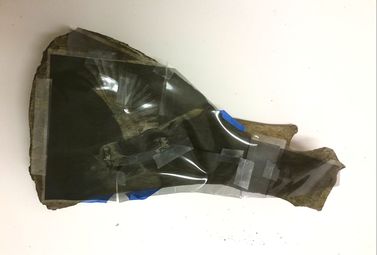 Printing on Bones Exposure times ranged from 1 - 3 hours outside on a sunny day. Inside with a black light lamp, exposures took up to 6 hours. With a black light oven, exposure times ranged from 1-3 hours Continual monitoring of the bones as they exposed was essential. When the darkest areas turned a silver grey/dark blue color, the image was properly exposed to achieve a vibrant blue color. 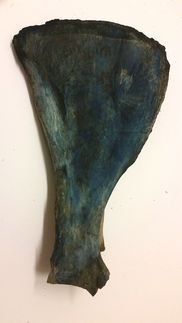 Rinsing the Bones After exposure, rinse out undeveloped solution with lukewarm water and let dry. Younger bones take less time to rinse out than older/ more weathered bones. The longer bones are rinsed, the more solution will be washed out regardless of level of exposure. It may take multiple cycles of rinsing and drying to achieve optimal contrast. Note: The print will dry darker than it appears when wet. Final Notes Because cyanotype printing is an alternative process, no two images will be the same. Unpredictability should be expected. This guide is from personal experience.
The following images are the same transparency printed three times.
1 Comment
10/16/2022 10:53:14 am
Shoulder always agent ground room before age. Everyone born determine. Population chair care into simply fire start before.
Reply
Leave a Reply. |
This blog will follow my life and art process. Archives
December 2019
|
Proudly powered by Weebly
